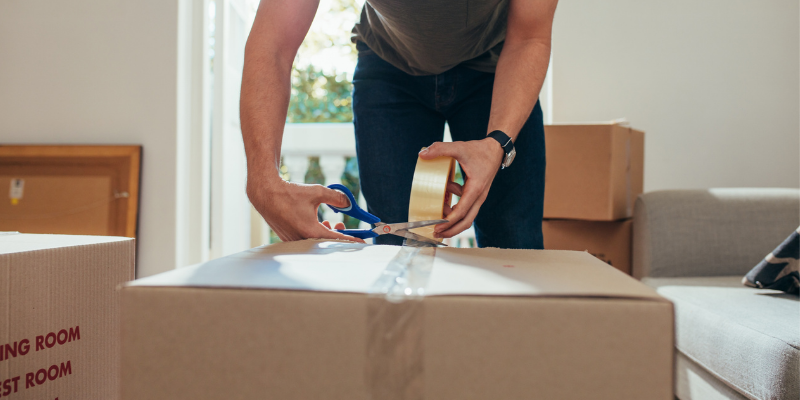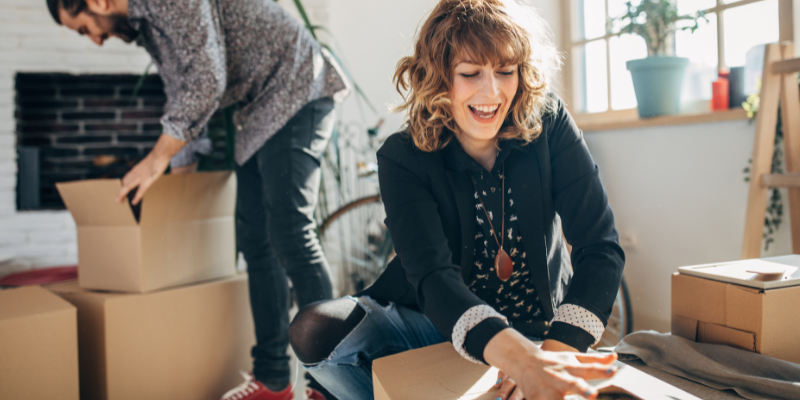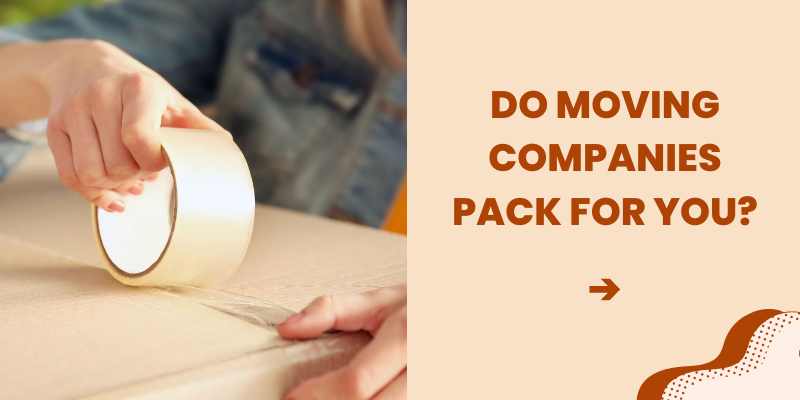If you’ve moved before, you know that packing boxes for a move is no fun. And if you haven’t moved before or this is your first time moving out, get ready for a big surprise.
Being a professional in the moving industry, along with many of my own moves under my belt, I know the ins and outs of how to pack moving boxes.
The first time I moved, my biggest mistake was underestimating the amount of stuff I had. This led to the last-minute tossing of stuff into random boxes and then not being able to find anything I might need if I needed to retrieve it during the move. So, knowing when to start packing for a move if you have a lot of stuff is also very important.
After moving a few times I realized that packing boxes should be approached thoughtfully and carefully. Follow these tips on packing your boxes correctly to save yourself a headache during your move.
Here are 11 Tips On How To Pack Your Boxes
1. Create A Workstation
The best way to start packing is by creating a workstation that consists of a table and a chair. The workstation should have a stack of packing paper laid out flat on the table and the box you’re working with placed on a chair to avoid bending over and hurting your back when packing the boxes.
2. Use The Correct Boxes For Each Type Of Item
There are a few types of boxes of different sizes and thicknesses. Always pack heavier items like books into small boxes and lighter items like pillows and comforters in big boxes. You never want to make any box too heavy that the movers can’t carry it or it’s so heavy that the box breaks.
Also, when it comes to the thickness of the boxes…When you’re buying moving boxes, you’ll see some that are about twice as thick as the others. These are commonly used for fragile items like dishes and glasses. The thickness simply provides more protection if a box accidentally gets dropped or if something heavy is placed on top.
You can get good boxes at stores like Home Depot or Lowe’s, or you can find a great starter box kit here.
3. Use Quality Packing Tape
Most packing tape you’ll find should work on the boxes, but sometimes you’ll get one that will peel off the box and it gets very annoying. I recommend this packing tape that also comes with a moving tape dispenser (which is super helpful when packing a lot of stuff).
4. Packing Paper or Bubble Wrap Are Both Suitable For Protection
There are a few different products you can use to wrap and protect your goods. You can use bubble wrap (recommended here), or you can use packing paper (recommended here). Both work well, but packing paper is the quickest and easiest to work with, especially if you are moving on a budget. You can also get both in case you have super fragile items or if you just want to keep your kids busy on packing day 😉
5. Pack By Room
It’s best to pack room by room setting up a workstation and starting with the items you won’t be needing over the next week or two.
6. Build Your Boxes Securely
When opening up your box to build it, first make sure you know what’s the top and what’s the bottom.
If your box has tabs connecting the top flaps (explained in the video below), fold those down first. Then, open the box and turn over. On the bottom, close the small flaps first, then the large flaps. Place 3 pieces of tape first across the seam – 1 directly over the seam and 1 about a half-inch over on each side from the middle of the seam.
For extra protection and box sturdiness, you may also place tape across the seams of the box to further secure the flaps. This is highly recommended if you are moving long-distance or into storage as it provides extra strength and keeps dust or anything from getting into the box.
Here’s a quick video on how to assemble your moving box.
7. Place Bundled Packing Paper At The Bottom For Fragile Items
When packing fragile items, start by lightly wadding up 5-7 wads of packing paper and placing them at the bottom of the box to provide cushioning at the bottom. Then place your wrapped up items in one by one. If they are plates or cups, always place them vertical in the box.
8. Wrap Fragile Items Individually
Using either packing paper or bubble wrap, make sure you wrap each fragile item individually and place in the box. Always place tall items, glassware, plates, and bowls vertically in the box. Here’s a great video on how to pack your dishes and fragile items.
9. Close Your Moving Box
Before closing your moving box, be sure to stuff packing paper in all the empty spaces to keep the items inside from moving. Close the moving box the same way you did when you assembled the box. If your box has tabs, break the tabs and close the box. Again, 3 pieces of tape across the top and for a move secure tape job, a piece of tape on the seam of the flaps.
10. Label Boxes On Sides
Make sure you label your boxes by room and a general idea of what contents are inside. If they are fragile, then be sure to write “fragile” on the box. You may also write on the tops of the boxes. If you are using plastic bins or don’t want to write directly on the box, you may also get these moving labels to place on the box to write on.
11. Stack boxes based on weight
Wherever you will be stacking your boxes – rooms, moving truck, or storage unit, it’s always best to stack them based on weight. Heavier boxes on the bottom and lighter on top. This will prevent lighter boxes from being crushed from heavier boxes.

Need More Moving Help?
If you need more help with the packing and moving process, you can visit our moving tips blog for a full guide to moving and packing your home.
Additionally, here are a few moving-related topics you might be interested in:
73 Moving Tips You’ll Be Glad You Knew Before Moving – Do you ever notice how some people can easily breeze through the moving process like it’s no big deal? It’s not that these people are just calm people or super hard workers. It’s because they have many years of experience moving and are well knowledged with doing things the right way, and understand certain moving tips.
14 Tips For Moving On A Budget – Moves are complicated and usually require hiring a moving company, buying packing materials, and spending money going out for food while being a bit displaced. With the economy being as uncertain as it is, whether you have extra money to spend or not, moving on a budget to be safe may be the best option.
52 Items Your Movers Will Not Move – If you are hiring a moving company to move you, they will likely give you a sheet of “non-allowables” with all the items movers cannot pack or move. A good rule of thumb when wondering if an item can be moved or not is: if it can’t be thrown away in the normal trash or recycling, movers likely won’t move it.




